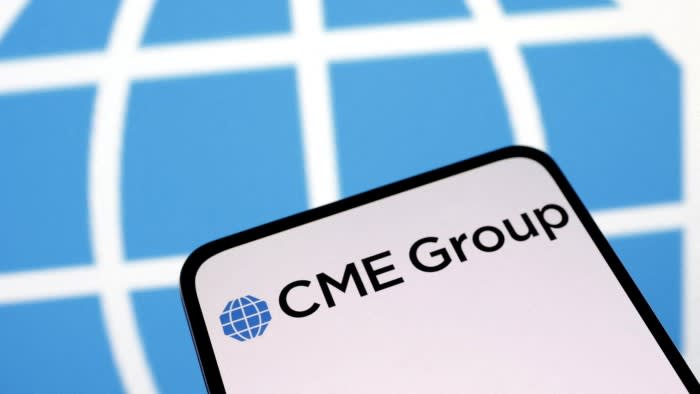Unlock the Editor’s Digest for free
Roula Khalaf, Editor of the FT, selects her favourite stories in this weekly newsletter.
CME Group has launched contracts that track the price of the raw material for lithium batteries, stepping up its rivalry with the London Metal Exchange for dominance of the global market for battery metals.
The US exchange on Monday said it planned to launch futures on spodumene, the rocks that are mined for the lithium chemicals used in electric vehicle batteries.
Its move marks a new front as the world’s largest commodities exchanges compete to be the main venue for producers and miners to trade battery metals as new technologies like electric vehicles spur long-term demand.
Until now the lithium futures contracts available — in London, Chicago, Guangzhou and Singapore — have been for processed forms of lithium such as lithium hydroxide and lithium carbonate, which are key ingredients in electric vehicle batteries and for industrial processing. Spodumene is lithium-rich rock dug from the ground, and Australia is the largest producer.
Most lithium processing takes place in China, and prices for downstream chemicals such as lithium hydroxide are often correlated to spodumene rock prices.
“We know for sure that battery metals will be one of the critical minerals of the future, and underlying demand will go up,” said Jin Hennig, global head of metals at CME Group.
The US group’s move underscores how exchanges are trying to attract more customers, by offering futures that hedge against more stages of the global lithium supply chain.
Prices for lithium chemicals have see-sawed over the past two years, first surging because of electric vehicle demand then crashing because of a glut of lithium production and a slowdown in EV growth.
The CME and the LME launched their first lithium hydroxide contracts only in 2021, with the Singapore Exchange offering their own futures the following year. However the CME has pulled ahead of the LME for contracts such as lithium hydroxide and cobalt.
Key beneficiaries of the new spodumene contract are likely to include producers in Australia, which is the world’s biggest miner of the lithium-containing ore.
The CME’s cash-settled spodumene futures contract will be launched on Oct 28 if approved by regulators, and is based on an assessment of spodumene delivered into China by Fastmarkets, a commodities data company.
Przemek Koralewski, head of market development at Fastmarkets, said the CME was edging ahead of the LME in terms of securing market share for its battery metals contracts.
Trading on the CME’s lithium hydroxide contract has surged more than 700 per cent, in volume terms, during the first eight months of this year, compared with the same period a year ago.
“The opportunity is huge, that’s why multiple exchanges are competing in this space,” said Koralewski, adding that as the lithium market grows its market structure could become more like oil, where the value of the derivatives traded are many times larger than the sales value of the physical product.
Industry analysts have drawn potential parallels between the lithium market and the iron ore market, which used to be largely traded on annual fixed price contracts until 2010. As China’s demand for iron ore surged, causing the annual contracts to break down, trading and hedging iron ore with futures has exploded.
At present lithium hydroxide is still primarily a physical market, with derivatives representing just 13 per cent of the physical market for lithium hydroxide, Koralewski noted.


